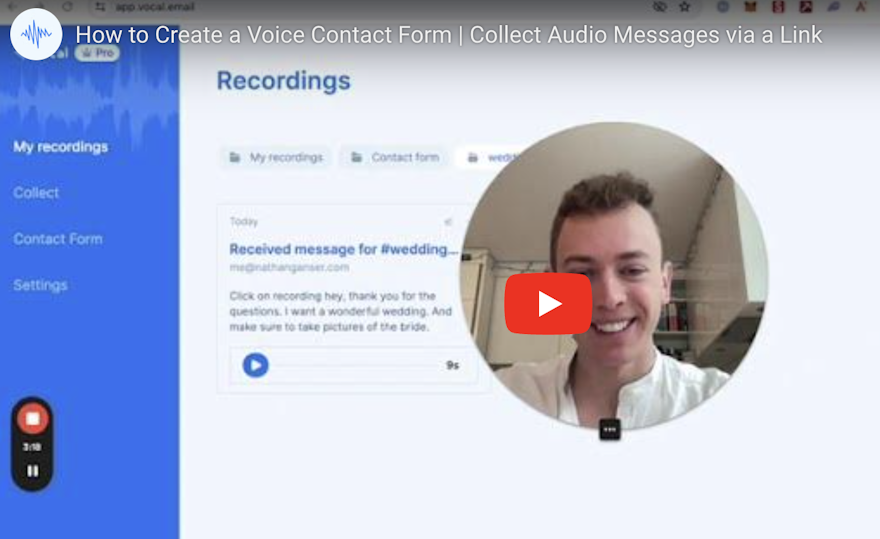In the digital era, businesses and individuals are constantly seeking innovative ways to interact with their audience. A voice contact form is a remarkable tool that can enhance this interaction by allowing users to leave voice messages instead of typing out text. This guide will walk you through the process of creating a voice contact form, using an application known as Vocal Email, and demonstrate its practicality across various scenarios such as collecting customer reviews or detailed requirements for services like wedding photography.
Understanding the Need for Voice Contact Forms
Voice contact forms offer a personal touch to the way businesses collect information, making them ideal for scenarios where detailed, nuanced communication is necessary. For instance, a wedding photographer looking to understand a client's needs comprehensively can benefit significantly from voice messages, allowing the client to articulate their vision more freely and in greater detail than what text might allow.
Setting Up Your Voice Contact Form with Vocal Email
Creating a voice contact form with Vocal Email is straightforward. Here's a step-by-step guide to get you started:
Log into Vocal Email: Visit the Vocal Email web application and log in. You can easily connect using your Google account or any other available account option.
Navigate to the 'Collect' Section: Once logged in, you'll find the 'Collect' option on the sidebar. This is where you'll create new collections for gathering voice messages.
Create a New Collection: Name your collection according to its purpose, such as "Wedding Form". If you encounter any issues, a simple reload usually fixes minor bugs.
Customize Your Form: Upon creating your collection, you can open it to customize. This step is crucial for tailoring the form to suit your specific needs. For example, if it’s for a wedding, you can modify the template message to ask specific questions about the wedding vibe, key moments to capture, etc.
Sharing Your Form: Vocal Email provides a link to your voice contact form, which you can then share with your clients or audience. An excellent feature is the ability to prefill the email field in the link, making it even easier for your clients to send their voice messages.
Receiving and Managing Voice Messages
Once your voice contact form is out there, and responses start coming in, managing these voice messages is simple:
- Access Your Messages: Go to the 'My Recordings' section in Vocal Email to see all the voice messages you've received, neatly organized by collection names, such as "Wedding Form".
- Review and Download: Each entry includes a transcription and the option to listen to or download the voice message, allowing you to efficiently process the information provided.
The Benefits of Using Voice Contact Forms
Voice contact forms offer numerous advantages, including:
- Personalized Communication: They allow for a more personal and engaging way to collect information.
- Detailed Responses: Users can provide more detailed and nuanced responses than they might with text.
- Efficiency: Transcriptions and easy management of messages streamline the process of reviewing responses.
Conclusion
Voice contact forms, facilitated by tools like Vocal Email, represent a significant advancement in how we collect information and interact with our audience. Whether for gathering detailed customer feedback, understanding event-specific requirements, or simply offering a more personal touch, voice contact forms can transform the way businesses and service providers engage with their clients.
For any further questions or assistance, the team at Vocal Email is always available to help. Embrace the power of voice with Vocal Email and add a new dimension to your contact forms today.
